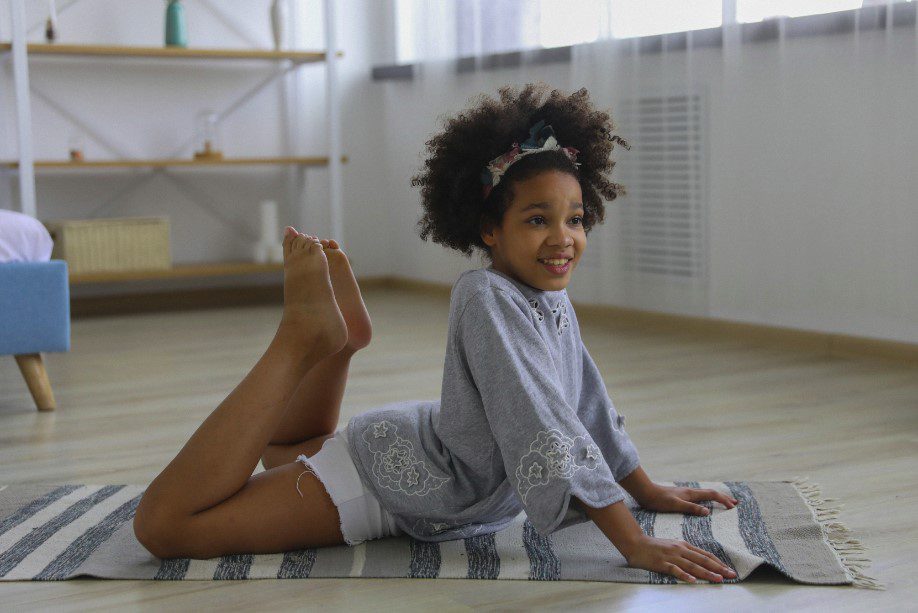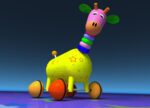Body constitution in adults and children refers to the overall physical and genetic makeup of an individual. It involves factors such as body type, structure, and characteristics that determine how a person looks, functions, and responds to their environment.
Each person has a unique body constitution that influences their height, weight, muscle tone, metabolism, and other physical attributes. Body constitution can also influence a person’s susceptibility to certain diseases or their ability to maintain good health.
It can also affect things like our physical appearance, energy levels, and even our preferences or tendencies. For example, some people may naturally have more energy and be active, while others may feel tired more easily and prefer calm activities.
Some people may have a higher metabolism and find it easier to digest certain foods, while others may have a slower metabolism and need to be more mindful of their diet.
Body constitution can also play a role in how we respond to illnesses or stress. Some people may have a stronger immune system and recover quickly from illnesses, while others may be more prone to certain health conditions.
Additionally, our body constitution can influence our emotional and mental tendencies, such as being more outgoing or introverted, or having a more stable or sensitive temperament.
Understanding our body constitution can help us make choices that promote our overall well-being. By recognizing our unique characteristics and needs, we can make lifestyle choices, such as diet, exercise, and stress management, that are more suited to our individual constitution.
Understanding Body Constitution in Children

Identifying and understanding the body constitution of children is essential for tailored healthcare and holistic well-being. Several assessment methods can be employed to determine body constitution, including physical examinations, measurements, and questionnaires.
These assessments help healthcare professionals gain a comprehensive understanding of a child’s physical attributes, enabling them to provide personalized recommendations for nutrition, physical activity, and overall health management.
Body constitution has implications for a child’s health and well-being.
For example, children with an ectomorphic body constitution may require additional nutritional support to meet their energy needs, while those with an endomorphic constitution might benefit from structured physical activity to maintain a healthy body weight. By recognizing and addressing the specific requirements of each body constitution
Body Constitution Types

The concept of body constitution types is not universally agreed upon in scientific research. However, three common body constitution types are often mentioned the most: ectomorph, mesomorph, and endomorph.
These types are based on general physical characteristics and traits. It’s important to note that individuals can have a combination of these characteristics, and the boundaries between body constitution types may not be strict.
Additionally, some experts argue that body constitution is a complex interplay of multiple factors, including genetics, lifestyle, and environment, rather than a fixed categorization into a limited number of types.
In children, body constitution types can also be observed, although they may be less distinct compared to adults due to ongoing growth and development.
The types:
Ectomorph:
Ectomorph children typically have a lean and slender physique with long limbs. They may appear tall and have a faster metabolism. Ectomorph children often have difficulty gaining weight and muscle mass.
Mesomorph:
Mesomorph children tend to have a more athletic build with well-developed muscles. They may have a balanced body shape and show a natural inclination towards physical activities. Mesomorph children have an easier time building muscle and maintaining a healthy weight.
Endomorph:
Endomorph children usually have a softer and rounder body shape. They may have a larger frame, wider waist, and hips. Endomorph children have a tendency to store more body fat and may find it challenging to lose weight.
It’s important to note that children’s body constitution can change as they grow and develop. So it’s essential to focus on their overall health, growth, and well-being rather than solely categorizing them into specific body constitution types.
How to Identify Children’s Body Constitution

Identifying a child’s body constitution involves observing various aspects of their physical and behavioral characteristics. While it may not be as straightforward as taking a test or using precise measurements, here are some general guidelines to help you identify a child’s body constitution:
1. Observe Physical Traits:
Pay attention to your child’s physical appearance and characteristics. Notice their body shape, weight distribution, and features like their height, build, and skin type. For example, are they naturally slender, average, or have a stockier build? Do they have dry or oily skin? These observations can provide clues about their constitution.
2. Consider Energy Levels:
Observe your child’s energy levels and activity patterns. Are they naturally more active and restless, or do they have a calmer and more reserved disposition? Do they have bursts of high energy or tend to have a more consistent energy level throughout the day? These observations can give insights into their constitution.
3. Note Emotional and Behavioral Patterns:
Pay attention to your child’s emotional and behavioral tendencies. Are they more outgoing and sociable or introverted and shy? Do they have a generally calm and stable temperament or tend to be more sensitive and easily affected by emotions? These observations can provide hints about their constitution.
4. Consider Patterns of Digestion and Appetite:
Observe how your child’s digestion and appetite function. Do they have a robust appetite and strong digestion, or are they more sensitive to certain foods and have a slower metabolism? Are there any specific food preferences or aversions they display? These observations can give clues about their digestive constitution.
5. Seek Professional Guidance:
If you are interested in a more in-depth assessment, you may consider consulting with healthcare professionals who specialize in traditional medicine systems like Ayurveda or Traditional Chinese Medicine.
These practitioners can provide a comprehensive evaluation based on their respective frameworks and help identify your child’s body constitution more accurately.
Remember that identifying a child’s body constitution is not an exact science and can vary based on individual characteristics and developmental changes. It’s also important to keep in mind that children’s constitutions may evolve over time as they grow and develop.
The State of Body Constitution Around the World

Body constitution is not only influenced by genetics and lifestyle choices but also by cultural factors. Different cultures have their own perspectives on body constitution and may have traditional practices related to it.
For example, in Traditional Chinese Medicine (TCM), body constitution is classified into various types such as Yin-deficiency, Yang-deficiency, Qi-deficiency, Dampness, and Phlegm. Each constitution type is associated with specific health characteristics and dietary recommendations.
In India, the ancient practice of Ayurveda recognizes three primary body constitutions, known as doshas: Vata, Pitta, and Kapha. These doshas represent different elements and qualities within the body and influence physical and mental attributes.
Ayurveda emphasizes the balance of these doshas for overall well-being and offers dietary guidelines and lifestyle recommendations based on an individual’s constitution.
In many African cultures, body constitution is linked to cultural beliefs and practices. For instance, in some tribes, certain body features or body types may be considered more desirable or representative of strength and beauty. These cultural perceptions of body constitution can influence dietary preferences, physical activities, and even social interactions.
Implications of Body Constitution in Child Health

Understanding a child’s body constitution can have significant implications for their overall health and development. Nutritional considerations play a crucial role in supporting different body constitutions.
For instance, children with an ectomorphic body constitution may benefit from a diet rich in high-quality proteins and healthy fats to support muscle development and energy requirements.
On the other hand, children with an endomorphic body constitution may require a balanced diet that focuses on portion control and nutrient density to manage body weight effectively.
Physical activity recommendations can also be tailored to a child’s body constitution. For mesomorphic children, activities that promote strength and agility can be beneficial, while ectomorphic children may benefit from activities that improve endurance and stamina. It’s important to consider a child’s body constitution to optimize their physical performance and reduce the risk of injuries.
Case Studies
To illustrate the practical implications of body constitution, let’s consider a few scenarios from around the world:

Scenario 1: Body Constitution and Dietary Preferences
In Japan, body constitution is associated with the concept of “metabolic types.”
For example, individuals with a “carbohydrate type” constitution tend to metabolize carbohydrates efficiently, while those with a “protein type” constitution may thrive on a higher protein diet. Understanding a child’s metabolic type can guide dietary recommendations and help maintain optimal health.
Scenario 2: Body Constitution and Susceptibility to Diseases
In certain regions of Africa, there is a belief that individuals with a specific body constitution may be more susceptible to certain diseases.
For instance, children with a “hot” body constitution may be thought to be more prone to conditions related to heat, such as skin rashes or fevers. This cultural understanding can influence healthcare approaches and preventive measures.
Scenario 3: Body Constitution and Physical Performance
In the field of sports, body constitution plays a vital role in determining an athlete’s performance.
For example, swimmers with a mesomorphic body constitution, characterized by a muscular build, may have a natural advantage in water sports. Understanding a child’s body constitution can help identify their athletic strengths and guide appropriate training and development.
How to Promote Healthy Body Constitution

To promote a healthy body constitution in children, it is crucial to adopt holistic approaches that address various aspects of their well-being. Here are some key strategies:
Balanced Nutrition: Provide a well-balanced diet that includes a variety of nutrient-dense foods. Incorporate fruits, vegetables, whole grains, lean proteins, and healthy fats into their meals. Consider the specific nutritional needs associated with their body constitution to optimize their health.
Regular Physical Activity: Encourage children to engage in regular physical activity based on their abilities and preferences. Provide opportunities for both structured exercise and unstructured play. Tailor activities to their body constitution, focusing on their strengths and areas for improvement.
Emotional Well-being: Foster emotional well-being by creating a supportive and nurturing environment. Encourage open communication, promote positive self-image, and teach healthy coping mechanisms for stress. Emotional well-being plays a significant role in maintaining overall health and body constitution.
Healthcare Collaboration: Collaborate with healthcare professionals who specialize in pediatric care and body constitution. Regular check-ups, screenings, and assessments can help monitor a child’s growth, development, and overall health. Work together to develop personalized healthcare plans that consider their body constitution.
Education and Awareness: Educate children and their families about the significance of body constitution and its impact on health. Raise awareness about cultural diversity in body constitution and the importance of embracing and respecting different body types. Promote positive body image and discourage body shaming or discrimination.
Q and A
Can body constitution change over time?
While certain aspects of body constitution may remain relatively stable, some factors, such as body composition and metabolic functions, can be influenced by lifestyle choices and environmental factors.
Are there specific diets for different body constitutions?
While there isn’t a one-size-fits-all diet for different body constitutions, nutritional recommendations can be tailored based on individual needs and body constitution characteristics.
How does body constitution impact growth and development?
Body constitution can influence various aspects of growth and development, including body composition, physical performance, susceptibility to certain diseases, and nutrient requirements.
Are there any medical treatments based on body constitution?
In certain traditional healthcare systems, treatments may be tailored based on an individual’s body constitution. However, it’s important to consult with qualified healthcare professionals for appropriate medical treatments.
How can parents support their child’s body constitution?
Parents can support their child’s body constitution by providing a balanced diet that meets their specific nutritional needs. Encouraging regular physical activity based on their body constitution can help promote optimal physical development. Additionally, creating a supportive and nurturing environment that prioritizes emotional well-being can contribute to overall health and body constitution.





Leave a Reply